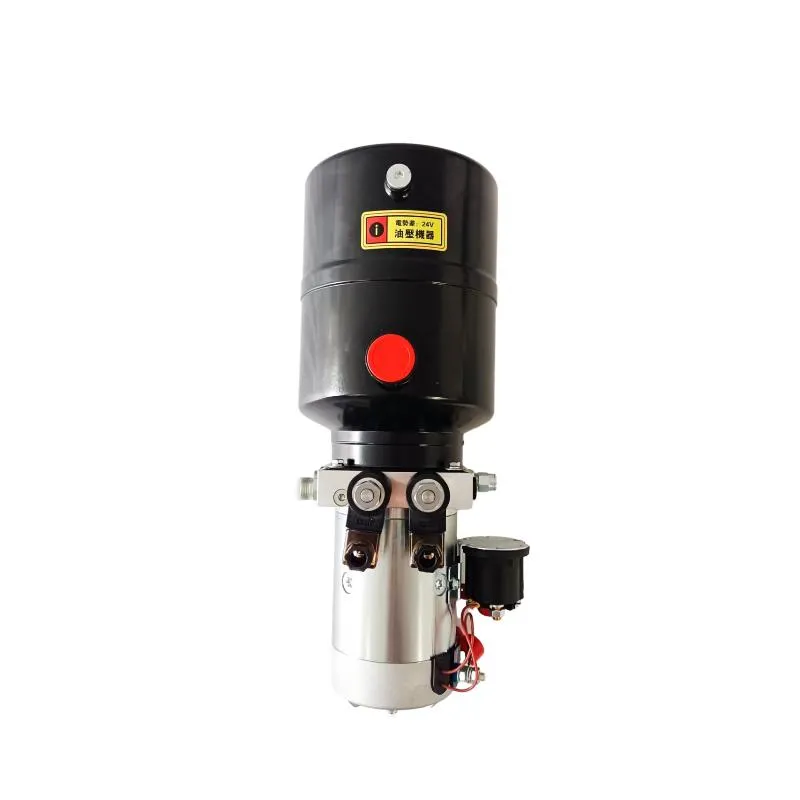Nov . 06, 2024 00:10 Back to list
Features and Advantages of Double Acting Hydraulic Cylinders for Enhanced Performance
Understanding Double Acting Hydraulic Cylinders
Double acting hydraulic cylinders are pivotal components in a variety of machinery across multiple industries, offering efficient and reliable linear motion. These cylinders play a critical role in applications ranging from construction and manufacturing to automotive and aerospace. In this article, we will delve into the fundamentals of double acting hydraulic cylinders, their design, functionality, advantages, and commonly found applications.
What is a Double Acting Hydraulic Cylinder?
A double acting hydraulic cylinder is designed to exert force in both extension and retraction strokes. Unlike single acting cylinders, which only use hydraulic pressure during one direction of movement, double acting cylinders utilize pressure for both the upward and downward movements. This is achieved through a pair of ports one for extending and the other for retracting the cylinder rod. This design allows for more controlled and powerful motion, making them ideal for tasks that require movement in both directions.
Design and Functionality
A double acting hydraulic cylinder consists of several key components the cylinder body, piston, piston rod, seal kits, and two hydraulic ports. The cylinder body houses the piston, which is connected to the piston rod. When hydraulic fluid is pumped into one of the ports, it creates pressure that pushes the piston, extending the rod. Conversely, when fluid is directed to the opposite port, the pressure forces the piston back, retracting the rod.
Seals are crucial in maintaining efficiency within the hydraulic system. They prevent hydraulic fluid from leaking, ensuring that the system maintains its pressure during operation. It is important for the seals to be durable, as they are subjected to high pressure and potential wear over time.
Advantages of Double Acting Hydraulic Cylinders
1. Efficiency Double acting cylinders can generate force in both directions, minimizing the need for additional components and allowing for smoother operation. This results in higher efficiency in hydraulic systems.
double acting hydraulic cylinder products

2. Power Since pressure is applied in both directions, double acting cylinders can provide greater force than their single acting counterparts. This makes them more suitable for heavy-duty applications, where significant lifting or moving capabilities are needed.
3. Control These cylinders offer precise control over movement, which is vital in applications requiring exact positioning. Operators can manage speeds and forces during both extension and retraction, increasing operational safety.
4. Versatility With a wide range of sizes and configurations available, double acting hydraulic cylinders can be adapted for a variety of applications, from small machinery to large industrial systems.
Common Applications
Double acting hydraulic cylinders are utilized in numerous industries
- Construction In excavators and backhoes, they provide the necessary force to lift heavy materials. - Manufacturing Used in stamping and pressing machines, they facilitate tasks like shaping metal or fabricating parts. - Aerospace Aircraft landing gear relies on double acting cylinders to smoothly extend and retract during takeoff and landing. - Automotive They are essential in hydraulic lifts, enabling efficient movement in service stations and manufacturing plants.
- Agriculture Tractors and farming equipment often employ these cylinders for tasks like adjusting plows and lifting heavy loads.
Conclusion
In summary, double acting hydraulic cylinders are integral to modern machinery, providing efficient, controlled, and powerful linear motion across various applications. Their design allows for flexibility and enhanced performance, making them indispensable in industries where movement precision is critical. As technology continues to evolve, the capabilities and applications of hydraulic cylinders will likely expand, further solidifying their role in driving innovation and efficiency in numerous fields.
-
Fork Lift Power Units - Hebei Shenghan | Efficiency, Reliability
NewsJul.13,2025
-
1.5-Ton Turbocharged Cylinder-Hebei Shenghan|Hydraulic Solution,Energy Efficiency
NewsJul.13,2025
-
Auto Hoist Power Units-Hebei Shenghan|Efficiency&Industrial Lifting
NewsJul.13,2025
-
Double Acting Power Units-Hebei Shenghan|Hydraulic Solutions,Industrial Efficiency
NewsJul.13,2025
-
1.5 Ton Lifting Cylinder 70/82-40-290-535 - High-Performance Hydraulic Solution | Hebei Shenghan
NewsJul.13,2025
-
Fork Lift Power Units - Hebei Shenghan | Efficiency&Reliability
NewsJul.13,2025
